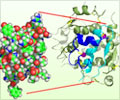Abnormal lipid metabolism is linked to 3 to 6 times higher risk of developing obesity and type 2 diabetes, found new study.

‘Abnormal lipid metabolism is linked to 3 to 6 times higher risk of developing obesity and type 2 diabetes.’





"We've suspected the presence of physiological mechanisms in fatty tissue that cause some people to become overweight and others not, despite similarities in lifestyle, and now we've found one," says Mikael Rydén, professor of clinical and experimental fat tissue research at Karolinska Institutet's Department of Medicine in Huddinge. In the present study, the researchers analysed tissue samples from subcutaneous fat taken from the stomachs of women before and after a follow-up period of about ten years. What they discovered was that the ability of the fat cells to free fatty acids, a process called lipolysis, in the first tissue sample could be used to predict which women would have developed type 2 diabetes by the end of the study. They also found that these women had reduced activity in a small number of specific genes involved in lipolysis.
Lipolysis is the process whereby a fat cell frees fatty acids, which are then used as a source of energy by the muscles. Researchers differentiate between basal lipolysis, which is continual, and hormone-stimulated lipolysis, which is triggered in response to an increase in energy requirement. The fat cells from the women who later developed overweight showed high basal but low hormone-stimulated lipolysis, which gave a 3 to 6 times higher risk of weight gain and type 2 diabetes.
"It's a bit like a car that's at high revs but that's lost its ability to get into gear when it needs to," says Professor Rydén. "The end result is that the fat cells eventually take up more fat than they can get rid of."
The teams first discovered the correlation in a group of 54 women, who gave the first tissue samples between 2001 and 2003 and who were followed up 13 years later. They then repeated the analysis on 28 other women who gave samples in 1998 and were followed up 10 years later, with the same results.
Advertisement
"Our results now need to be corroborated in larger studies and for men as well, but we hope to develop a clinically expedient way of identifying individuals at risk of developing overweight and type 2 diabetes, who might need more intensive lifestyle intervention than others to stay healthy," says Professor Rydén.
Advertisement















